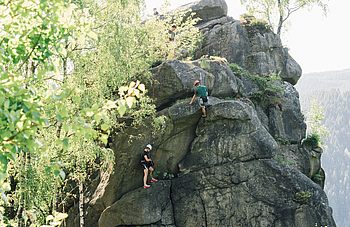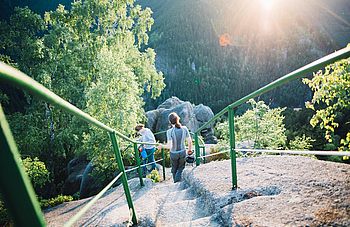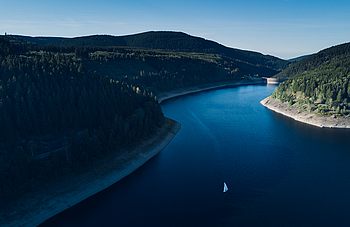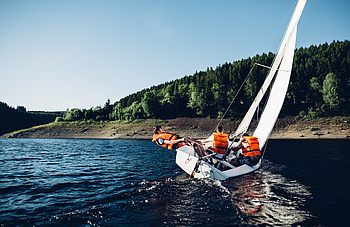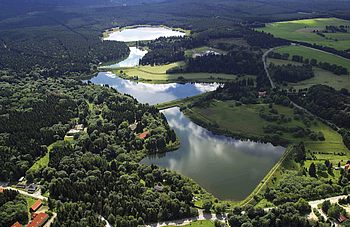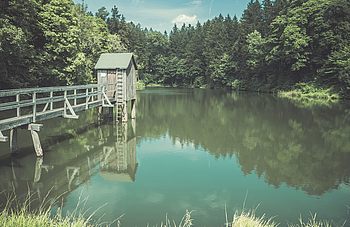The region
TU Clausthal is nestled in Germany’s northernmost mountain range, the Harz Mountains. The highest peak in the Harz is the 1141-meter Brocken. The region is also dotted with lakes and dams. This natural landscape offers a variety of outdoor activities, from sailing to mountain biking to free climbing; in winter, there is cross-country skiing.
With more than 4,000 students and 1,100 employees, TU Clausthal is an economic and social hub of the Goslar district. Formerly largely a mining region, the western Harz has now become a tourist destination. The Rammelsberg Mining Museum just outside Goslar is recognized as UNESCO World Heritage, as is the Upper Harz mining water management system surrounding Clausthal-Zellerfeld. Another attraction is the Harz National Park, which was formed in 2006 from two existing national parks – the Harz in Lower Saxony and the Upper Harz in Saxony-Anhalt – to become Germany’s first cross-regional national park.
Clausthal is surrounded by forests, lakes, and mountains. The Harz Mountains offer hikers, mountain bikers, canoers, climbers, and winter-sports enthusiasts amazing recreational opportunities. In summer, those who prefer to relax in nature can enjoy lounging beside the many lakes of the Upper Harz Water Regale, swimming in clean water, grilling, and simply taking a break.
A wellspring of technology
UNESCO has designated the Upper Harz mining water management system, which is considered a historical masterpiece of ingenuity in mining and engineering, as a World Cultural Heritage site, recognizing it as one of the world’s largest pre-industrial energy supply systems. A large portion of the water management system, which has been protected as a historic monument for decades, remains in working order today. Since 2010, the campus surrounded by nature has had another distinguishing feature: it is also a campus surrounded by World Cultural Heritage.
![[Translate to English:] [Translate to English:]](/fileadmin/_processed_/9/1/csm_Beachvolleyball_1_1a8913aa18.jpg)
